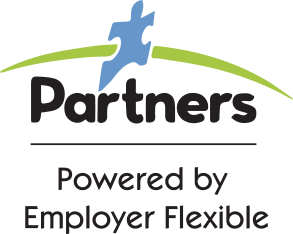It’s That Time Again: Updating Your Year-End 2022 HR Checklist
It’s That Time Again: Updating Your Year-End 2022 HR Checklist

Dusting off the year-end HR checklist is a good sign for most small and medium-sized business owners as 2022 has been one of the most challenging years ever and cannot come to an end quickly enough.
“America’s small businesses can’t catch a break,” Lydia DePillis wrote in The New York Times this summer. “After two years of shutdowns and restrictions due to the Covid-19 pandemic, they’re straining to keep up with price increases without losing customers to larger competitors.”
If that wasn’t enough to keep business owners up late at night, there was the historically tight labor market and rising interest rates from the Fed.
“They are struggling to keep positions filled as competition for workers remains at a fever pitch,” wrote DePillis. “And just at the moment that many business owners begin to recover and shore up their depleted savings, they’re worried that the Federal Reserve’s medicine for inflation will bring fresh hardship: higher borrowing costs and timid consumers.”
Of course, this is more than just one reporter’s view with the following to consider:
- The National Federation of Independent Business logged its lowest-ever economic expectations reading this summer.
- U.S. Chamber of Commerce Small Business Index in the 2022 second quarter showed that inflation was a top concern among business owners.
- Goldman Sachs’s small-business coaching program reported that 3 in 4 participants said higher costs had impacted their finances.
However, the pride of America’s small and medium-sized business owners is their resilience. Thenonprofit Small Business Majority survey released this month shows that “more than 6 in 10 small business owners are optimistic about their business prospects for the next six months.”
The next few months mean a new calendar year, with 2023 on the horizon, and some important housekeeping for business owners.
December is More than Yuletide Cheer for Biz Owners
The final month of the year can be a crazy time for business owners with major winter holidays changing the way employees and customers go about their business during this time.
“While December is a busy time for small businesses trying to end the year on a high note, it should also be a time for introspection and review,” says the U.S. Small Business Administration.
With December 31 signaling the end of the U.S. tax year and many businesses' fiscal year, there are some very important issues to tackle before 2023 begins.
If you wait until Black Friday and turkey leftover sandwiches to organize for the year coming to an end, then you have waited too late, it is best now to prepare by revisiting your “Year-End HR Checklist”.
Year-End HR Checklist: Payroll and Taxes
We would make the old joke about “death and taxes” but, honestly, no business owners find the subject of taxes funny. For your end-year HR checklist, however, taxes and payroll issues take real priority.
Now is the time to check or review:
- Any upcoming changes to local, state, and federal laws that will affect your business next year.
- Complete all paperwork and forms due to the IRS, Social Security, and other local and state authorities.
- Make sure all your business tax documents are in order, which will make life much easier come tax season in the spring.
- Double-check employee compensation, deductions, and tax liabilities from employee paychecks and adjust as needed for the new year.
- Determine what year-end bonuses will be allocated to your payroll.
- Update employees now on any unused HR benefits such as sick days, personal time off, and vacation as well as use-it-or-lose-it funds such as those in flexible spending accounts (FSAs).
Michelle DeBella of JumpCloud tells Forbes that now is the time to consult with your tax professionals for year-end decisions.
“Talk to them about opportunities to accelerate deductible expenses or take advantage of capital purchases,” says DeBella.
Some items from last year’s year-end HR checklist no longer apply, such as the expired Employee Retention Tax Credit, but other programs are ongoing such as:
- Work Opportunity Tax Credit: This federal tax credit is available to employers for hiring individuals from certain target groups who have faced significant barriers to employment and is available for wages paid to certain individuals who begin work on or before Dec. 31, 2025. The work opportunity tax credit is equal to 40 percent of up to $6,000 wages paid or incurred with a maximum credit of $2,400 for an employee who:
o Is in their first year of employment.
o Is certified as being a member of an eligible group.
o Works at least 400 hours of service for that employer
“This is a one-time credit for each new hire and an employer cannot claim the credit for employees who are rehired,” explains the IRS. “A 25 percent rate applies to wages for individuals with 120 to 399 hours of service. Up to $24,000 in wages may be considered in determining the work opportunity tax credit for certain qualified veteran targeted groups.”
Making a List and Checking it Twice: End-Year 2022
Make sure you are putting the “HR” in that end-year 20222 HR checklist by doing the following:
- Examine the benefits you are offering employees to make sure you remain competitive in 2023.
- Finalize all employee open enrollment choices, verify employee-dependent coverage, and make sure that new health insurance cards are distributed to employees.
- Review company-wide salaries and prepare for meeting employee expectations of increased paychecks in the future while trying to maintain costs in the face of inflation.
- Ensure that any mandated, and elective, training is completed by employees by the end of the calendar year.
- Update your employee handbook.
- Determine staffing needs in 2023 and adjust job descriptions as needed.
- Review all hiring recruiting and onboarding procedures.
- Ensure that all annual performance reviews have been completed across all departments.
- Prepare and distribute your 2023 HR calendar so all employees are on the same page.
- Back up all HR data in a safe and secure environment and examine precautions in place to prevent loss of information from cybercriminals.
Contact Partners HR today for insight and reliable guidance on all HR matters including help ticking off all the boxes on your end-year 2022 HR checklist.



